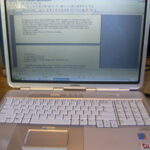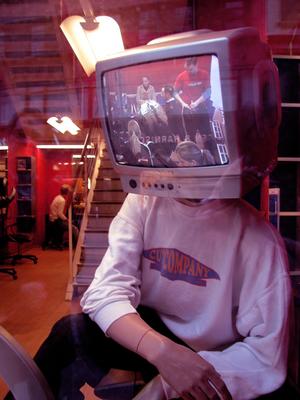A few weeks ago, a friend of mine asked me to look at her laptop. It didn’t boot up, she said. Could I fix it?
Sure. Why not. Let me take a look. She told me the screen wouldn’t come on, so my initial thought was that something had disconnected or shorted out with the display. I’ve changed a few LCD screens before, so I knew it wouldn’t be too much trouble.
The trouble is, that wasn’t the problem. I hooked the laptop up to an external monitor to check it out, and the laptop didn’t boot at all. Looks like something else was wrong, and not the video…
The Symptoms
When I turned the power on, the laptop’s fan came on. It sounded for a brief second like the hard drive was being accessed, but that noise stopped. After the initial start, there was no activity from the computer – beeping, drives spinning, nothing.
In addition, two lights were on. There’s a small LED light on the caps lock button, and it was a solid light. There was also a solid orange LED on the F12 key.
First Attempt
One potential way to get a laptop to start is to completely drain the power from the computer and restart it from scratch. To do this, remove the battery, disconnect the charger, and hold the power button down for a while – about 20 or 30 seconds.
Then, plug the charger back in and see what happens. That led to a minor change, but the laptop still didn’t boot. However, now the LED on the caps lock was blinking. It blinked three times, paused, then continued blinking three blinks at a time.
What Do the Blinks Mean?
These LED lights are a means of troubleshooting your laptop. They convey error codes to you, and if you know what they mean you can figure out what’s wrong. HP has a list of blinking error codes on their website.
In this case, three blinks means that there was a failure with the memory module. Either the RAM is not seated properly, or the RAM is failing.
The laptop had two 1GB RAM boards installed. I removed them both, re-seated one board, and the computer started fine. I added the second board, and it booted once, but then it hit a blue screen of death. I removed the RAM board I tried first and isolated the second one, and the computer wouldn’t boot at all.
When I got rid of that second RAM board and just used the first one, everything was fine. So, the logical diagnosis? One of the RAM boards was going faulty. Removing it allowed the computer to boot (albeit with less RAM than usual), and for $10-20 she can buy another gigabyte of RAM to replace it.
Bottom Line
The bottom line is to use the resources HP gives you to trouble shoot things. Computers can be mysterious things, and sometimes it’s impossible to tell what’s wrong.
When there’s a light blinking in a certain pattern, though, it often means there’s a specific problem. In this case, three blinks meant that there was a problem with the memory module. Replacing it brought the laptop back to life – for less than $20.






